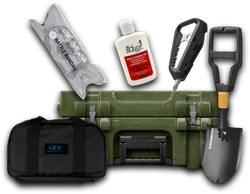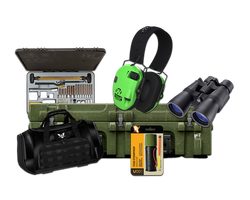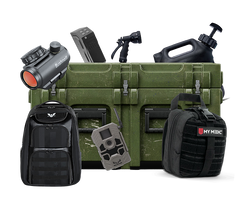如何穿戴防弹衣:全面指南
Table of Contents
- Introduction
- Understanding the Plate Carrier
- Choosing the Right Plate Carrier
- How to Put on a Plate Carrier
- Maintaining Your Plate Carrier
- Practical Tips for Enhanced Readiness
- Conclusion
- FAQ
Introduction
Imagine a situation where every second counts. Whether you're in a tactical situation, a training exercise, or simply preparing for the unexpected, knowing how to put on a plate carrier quickly and effectively is crucial. A well-fitted plate carrier is not just a piece of gear; it’s your first line of defense in high-risk environments. Understanding how to don and adjust this vital piece of equipment can significantly impact your readiness and effectiveness.
Plate carriers have evolved from basic body armor to sophisticated tactical gear that combines protection with functionality. They are designed to hold ballistic plates that protect against a range of threats, making them essential for military personnel, law enforcement officers, and civilians who prioritize safety and preparedness. This blog post aims to provide you with thorough insights into how to put on a plate carrier, ensuring you maximize its potential.
By the end of this article, you will have a clear understanding of the proper techniques for wearing a plate carrier, adjusting it for comfort and effectiveness, and integrating it with your tactical gear. We will cover essential aspects such as fitting, adjusting, and maintaining your plate carrier, as well as practical tips for improving your readiness when it matters most.
Let’s dive into the tactical world of plate carriers and equip you with the knowledge you need to wear yours like a pro.
Understanding the Plate Carrier
What Is a Plate Carrier?
A plate carrier is a tactical vest designed to hold ballistic plates that provide protection against firearms. Unlike standard bulletproof vests, plate carriers are modular, allowing for customization based on the user's needs. They typically have pockets for front and back plates, with some models offering side plate compatibility, enhancing overall protection.
Key Features of Plate Carriers
- Modularity: Allows for the attachment of various pouches and accessories.
- Adjustability: Many models feature adjustable straps for a snug fit.
- Emergency Access: Quick-release systems enable rapid removal in emergencies.
- Durability: High-quality materials, such as 1000D nylon, provide longevity and resistance to wear and tear.
Why Use a Plate Carrier?
Plate carriers serve multiple purposes:
- Protection: They shield vital organs from ballistic threats.
- Load Bearing: They can carry tactical gear like magazines, medical kits, and tools.
- Versatility: Suitable for various situations, from military operations to outdoor adventures.
Choosing the Right Plate Carrier
Before you can effectively put on a plate carrier, it’s essential to select the right one. Here are factors to consider:
Size and Fit
A well-fitted plate carrier ensures comfort and effectiveness. Measure your chest size and torso length to choose an appropriate size. Most manufacturers provide sizing charts to guide you.
Material Quality
Opt for plate carriers made from high-quality materials that offer durability and resistance to abrasions. Look for carriers made from nylon or polyester, with reinforced stitching.
Plate Compatibility
Ensure your plate carrier can accommodate the type of ballistic plates you intend to use. Most carriers fit standard-sized plates, but it's crucial to verify dimensions.
Additional Features
Look for features that enhance usability, such as:
- MOLLE Webbing: For attaching pouches and accessories.
- Quick-Release Buckles: For rapid removal.
- Emergency Drag Handles: To assist in evacuating injured personnel.
How to Put on a Plate Carrier
Now that you have a better understanding of what a plate carrier is and how to choose the right one, it’s time to learn how to put it on effectively. Follow these steps for a proper fit:
Step 1: Prepare Your Gear
Before donning your plate carrier, gather all necessary components:
- Plate Carrier: Ensure it is clean and free of debris.
- Ballistic Plates: Insert the front and back plates into their respective pockets.
- Additional Gear: Arrange any tactical pouches or accessories you plan to attach.
Step 2: Loosen All Straps
When first putting on your plate carrier, it’s best to loosen all straps. This allows for easier entry and adjustment later. Check the shoulder straps, cummerbund, and any side buckles.
Step 3: Slip It Over Your Head
- Position the Plate Carrier: Hold the carrier in front of you, with the front plate facing outward.
- Insert Your Arms: Slide your arms through the shoulder straps. The carrier should hang loosely at this stage.
Step 4: Adjust the Shoulder Straps
- Pull the Straps: Adjust the shoulder straps until the carrier sits comfortably on your shoulders.
- Check for Height: Ensure the front plate is at the correct height, ideally resting at the sternal notch, where the sternum meets the clavicle.
Step 5: Secure the Cummerbund
- Wrap the Cummerbund: Bring the cummerbund around your waist. This may be a side-attach system or a rear-attach system, depending on your carrier.
- Fasten the Buckles: Secure the cummerbund to ensure a snug fit without restricting movement.
Step 6: Final Adjustments
- Adjust for Comfort: Tug on any remaining straps to achieve a comfortable fit. Ensure that the carrier is not too tight but also not loose enough to shift during movement.
- Test Mobility: Move around to test the range of motion. The carrier should allow for full mobility without chafing or restricting movement.
Step 7: Practice Regularly
Like any skill, practice makes perfect. Regularly putting on your plate carrier will help you become more adept at donning it quickly and efficiently in real situations.
Maintaining Your Plate Carrier
Once you know how to put on a plate carrier, it’s essential to maintain it for longevity and reliability. Here are some maintenance tips:
Cleaning
- Regular Inspection: Routinely check for wear and tear.
- Surface Cleaning: Use a damp cloth and mild detergent to clean the exterior.
- Deep Cleaning: For thorough cleaning, refer to the manufacturer’s guidelines, as some carriers may be machine washable.
Storage
- Dry Environment: Store your plate carrier in a cool, dry place to prevent mildew and deterioration.
- Avoid Heavy Compression: Hang or store it flat to maintain its shape.
Upgrading Components
As your tactical needs change, consider upgrading components such as shoulder pads, cummerbunds, or adding new pouches for better organization.
Practical Tips for Enhanced Readiness
- Practice in a Controlled Environment: Regularly practice putting on your plate carrier in various scenarios, such as wearing gloves or under stress.
- Integrate with Other Gear: Make sure your plate carrier complements other tactical gear, such as helmets, gloves, and tactical vests.
- Stay Informed: Keep abreast of new gear and techniques through communities like Crate Club, which offers curated tactical gear and resources for enthusiasts.
Conclusion
Putting on a plate carrier is a fundamental skill for anyone who prioritizes tactical readiness and personal safety. With the right knowledge and practice, you can ensure your plate carrier is not only worn correctly but also adapted to your specific needs. Remember, the effectiveness of your gear is only as good as your ability to use it properly.
Whether you're preparing for tactical situations or outdoor adventures, a well-fitted and properly worn plate carrier can make all the difference. By following the steps outlined in this guide, you can enhance your readiness and confidence in any scenario.
To further equip yourself, consider exploring Crate Club's subscription services for curated tactical gear delivered right to your door, or visit the Crate Club Shop to find high-quality plate carriers and accessories tailored to your needs.
FAQ
Can I wear a plate carrier without plates?
Yes, you can wear a plate carrier without plates, but it will not provide the ballistic protection it is designed for. It can still serve as a tactical vest for carrying gear.
How tight should a plate carrier be?
A plate carrier should fit snugly against your body without restricting movement. You should be able to breathe comfortably and move your arms freely.
Can I customize my plate carrier?
Absolutely! Plate carriers often come with MOLLE webbing for attaching pouches, and you can customize them according to your mission requirements.
Is it legal to wear a plate carrier in public?
Yes, it is legal to wear a plate carrier in public in most areas of the United States, though some local laws may apply. Always check your local regulations.
How do I know if my plate carrier is properly fitted?
The front plate should rest at the sternal notch, and the carrier should feel secure but not restrictive. You should also be able to move freely without discomfort.
By understanding how to put on a plate carrier and maintaining it properly, you empower yourself to face any situation with confidence. Embrace the community of tactical enthusiasts and continuously improve your skills and knowledge, for preparedness is the key to success.
分享这篇文章



